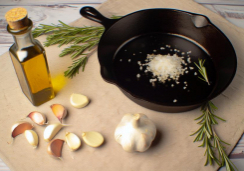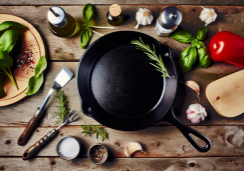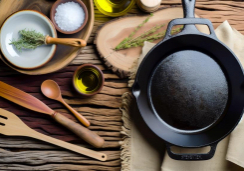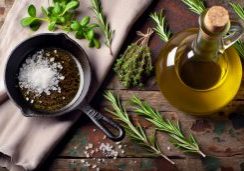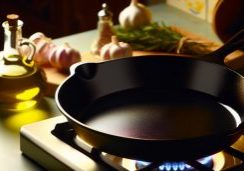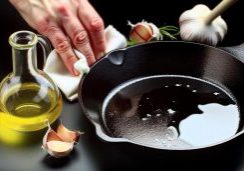What's Baking? Gluten-Free Techniques and Treats
In the vast universe of baking, you've probably heard that crafting a gluten-free pastry that rivals its glutenous counterpart is akin to reaching culinary enlightenment. As you stand in your kitchen, with a myriad of alternative flours and binders at your disposal, the challenge of perfecting a gluten-free recipe may seem daunting, but rest assured, it's a mountain you can summit.
You'll find that with the right techniques—like understanding the unique properties of gluten-free flours, mastering the art of mixing and resting your doughs, and tweaking moisture levels—you're well on your way to creating delectable baked goods that'll leave guests second-guessing their gluten-filled past.
While you've got the basics down, there's a world of nuanced skills to hone that can elevate your gluten-free baking from good to great. Stick with me, and together we'll explore these strategies, ensuring that your next batch isn't just satisfactory, but exceptional.
The question now isn't if you can bake gluten-free, but how spectacularly you'll succeed in doing so.
Understanding Gluten-Free Flours
Delving into the world of gluten-free flours, you'll discover that each type offers its own unique blend of flavors and textures, making the art of substitution in your favorite recipes both a science and a culinary adventure.
Gluten-free baking requires a keen understanding of how these flours behave differently from traditional all-purpose flour. Gluten-free flours often need to be mixed to mimic the elastic qualities that gluten imparts. Thus, creating a gluten-free flour blend becomes an exercise in balance and precision.
You'll learn that rice flour might lend a delicate crumb, but by itself, it lacks the binding properties gluten provides. This is where xanthan gum often enters the equation, giving structure to your gluten-free recipes. You'll also find that gluten-free flours absorb more liquid than wheat flour, so it's crucial to adjust the moisture in your gluten-free recipe to prevent a dry or crumbly outcome.
Each flour—whether it's almond, coconut, or buckwheat—brings a different strength to the table. When you use gluten-free flours, you're not just replacing; you're reinventing the textures and flavors that make your treats delightfully unique. It's a journey that'll transform your approach to gluten-free treats, one carefully measured cup at a time.
Mixing and Resting Techniques
When you mix your gluten-free batter, taking the time to let it rest is like giving the ingredients a chance to come together, creating a smoother and more cohesive texture in your finished treats. Unlike traditional baking where gluten to develop is key, gluten-free baking mix demands different techniques for achieving that perfect consistency.
Resting Techniques:
- Allow gluten-free batters to hydrate properly, as gluten-free flour blends absorb extra liquid over time.
- Reduce the grittiness often associated with gluten-free baked goods, especially noticeable in pancakes and cookies.
- Blend the distinct ingredients thoroughly, fostering even distribution and better structure.
By incorporating these resting techniques, you'll find that your gluten-free batters lose that initial gritty feel, becoming more pliable and akin to their gluten-containing counterparts.
A typical resting period of about 30 minutes can make all the difference, though some trial and error may be necessary to find the sweet spot for your specific flour blend and recipe.
Adjusting Baking Times
Having explored how resting your gluten-free batter can improve texture, it's equally crucial to adjust baking times to ensure your treats are cooked to perfection. Gluten-free baking tips often stress the importance of not just the ingredients, like baking powder and other leavening agents, but also the method and timing.
With batters and doughs that take longer to bake, you'll need to be patient and attentive. Using an oven thermometer is key to achieving even baking. Gluten-free goodies frequently require a lower temperature to avoid drying out. By baking at a slightly reduced heat, you let the magic of dry milk, which can enhance moisture retention, do its work without rushing the process.
This successful gluten-free strategy prevents the common pitfall of a gummy center or a burnt exterior.
How Can I Use Gluten-Free Techniques and Treats in Baking?
Incorporating glutenfree baking recipes into your kitchen routine allows for delicious, health-conscious confections without sacrificing texture or taste. From almond flour pancakes to quinoa chocolate cakes, these techniques ensure everyone can indulge in homemade treats, perfect for those with gluten sensitivities or anyone exploring alternative ingredients.
Moisture and Freshness Tips
To maintain the enticing taste and texture of your gluten-free creations, it's crucial to store grains and starches in cooler environments like the refrigerator or freezer, which significantly extends their shelf life. When baking gluten-free, you're often dealing with potent starch that's finer than wheat flour, which means moisture and freshness can be a challenge.
Here are some tips to keep your baked goods delectably moist and fresh:
- Freezing and Thawing
- *Leftovers*: Freeze your gluten-free banana bread or cookies to lock in freshness. Thaw completely before serving to enjoy as if they were just baked.
- *Cooling*: Don't rush to take your gluten-free pie out of the oven too soon. Transfer it to a wire rack; this prevents sogginess by allowing air to circulate.
- Moisture-Enhancing Ingredients
- *Sour Cream and Yogurt*: Incorporate sour cream or yogurt into recipes like cakes or muffins for extra tenderness.
- *Pureed Fruit*: Adding pureed apple or pumpkin can introduce moisture while converting recipes to be gluten-free.
- Sweet Tweaks
- *Brown Sugar*: Opt for brown sugar over white when possible. It has more moisture, which can make all the difference in your gluten-free treats.
Recipe Substitutions Guide
Navigating the world of gluten-free baking, you'll find that mastering the art of substitution is key to transforming traditional recipes into delectable gluten-free versions. This recipe substitutions guide is your compass to convert your favorite recipes, ensuring no family recipes are left behind.
Gluten-free techniques often require rethinking certain ingredients to maintain the texture and flavor you love.
When tackling traditional recipes, you might need to add additional binders since gluten, which typically holds baked goods together, is absent. Think potato starch, which can enhance the structure without altering taste.
To combat dryness, incorporate different ingredients like pureed fruit or yogurt for an irresistible, moist crumb.
What Gluten-Free Techniques and Treats Can You Recommend for Baking?
Mastering glutenfree baking recipes opens a world of delectable possibilities for those with dietary needs. Almond flour and coconut flour offer nutty flavors, while xanthan gum lends structure. Explore the magic of gluten-free pastry, savoring every bite of tender, flaky crusts, and moist, flavorful cakes.
Conclusion
You've whisked, folded, and baked your way through the gluten-free mysteries, and now you're ready to rise to any occasion.
Remember, your flour blend sets the stage, and a good rest can make all the difference. Keep an eye on the clock—timing is everything.
Don't skimp on moisture; it's the secret to freshness. Embrace the swaps, they're your best pals.
With these tricks up your sleeve, you'll charm the skeptics and delight the devotees.
Happy baking!

